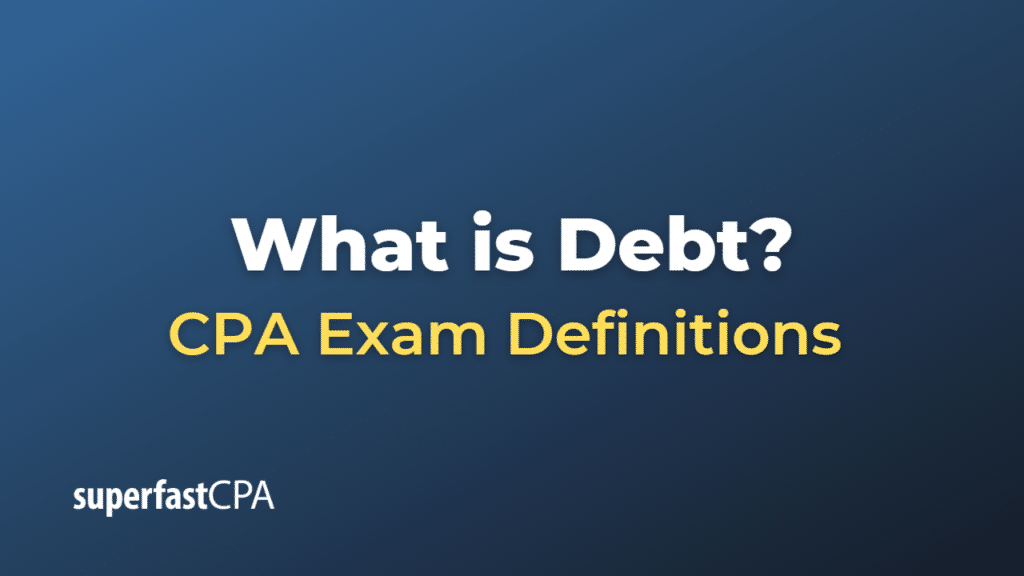Debt
Debt is an amount of money borrowed by one party from another. It’s used by many corporations and individuals as a method of making large purchases that they could not afford under normal circumstances.
When a debtor borrows a debt, it becomes a liability to them because they’re obligated to repay the amount to the lender (creditor) at a later date, usually with interest. The interest provides an incentive for the lender to engage in the loan.
Debt can come in the form of secured or unsecured loans. A secured loan involves the use of collateral that can be claimed by the lender if the debtor defaults on the loan. An unsecured loan does not involve collateral, but typically has a higher interest rate because it’s riskier for the lender.
Examples of debt include:
- Mortgages: This is when people borrow money to buy a house. The house itself usually serves as collateral for the loan.
- Student Loans: These are loans taken out to pay for higher education. These loans typically have lower interest rates and flexible repayment options.
- Credit Card Debt: This is a form of unsecured debt. If a person uses a credit card to make a purchase and doesn’t pay off the balance in full by the due date, they will owe the remaining balance plus interest.
- bonds: Companies and governments often borrow money from investors by issuing bonds. When an investor buys a bond, they’re essentially loaning money to the issuer in exchange for periodic interest payments and the return of the principal amount when the bond matures.
Debt can be a useful tool when used responsibly, as it can enable businesses and individuals to make investments and purchases that they otherwise couldn’t afford. However, excessive debt can lead to financial problems if the debtor is unable to repay what they owe.
Example of Debt
Scenario: Jane wants to buy a house that costs $300,000. However, she only has $60,000 in savings. To make up for the shortfall, Jane decides to take out a mortgage loan from her local bank.
Here’s how the transaction might work:
- The Loan: Jane applies to the bank for a loan, and after reviewing her credit score, employment history, and other factors, the bank agrees to lend her $240,000 to purchase the house. This loan is the debt.
- The Collateral: The house that Jane is purchasing serves as collateral for the loan. This means that if Jane fails to repay the loan, the bank has the right to take possession of the house and sell it to recover the loan amount.
- The Repayment: Jane agrees to repay the loan over a period of 30 years. She will make monthly payments that include both a portion of the principal (the original loan amount) and the interest (the cost of borrowing the money).
- Interest: The interest is determined by the interest rate set by the bank. For example, if the interest rate is 3% per year, Jane will pay about $7,200 in interest in the first year.
By using debt in the form of a mortgage, Jane is able to purchase a house that she wouldn’t have been able to afford otherwise. However, she now has a long-term obligation to make monthly payments to the bank. If she fails to make these payments, she could lose her house.
Remember, while debt can be helpful for making large purchases or investments, it’s important to borrow responsibly and have a plan to repay what you owe.













